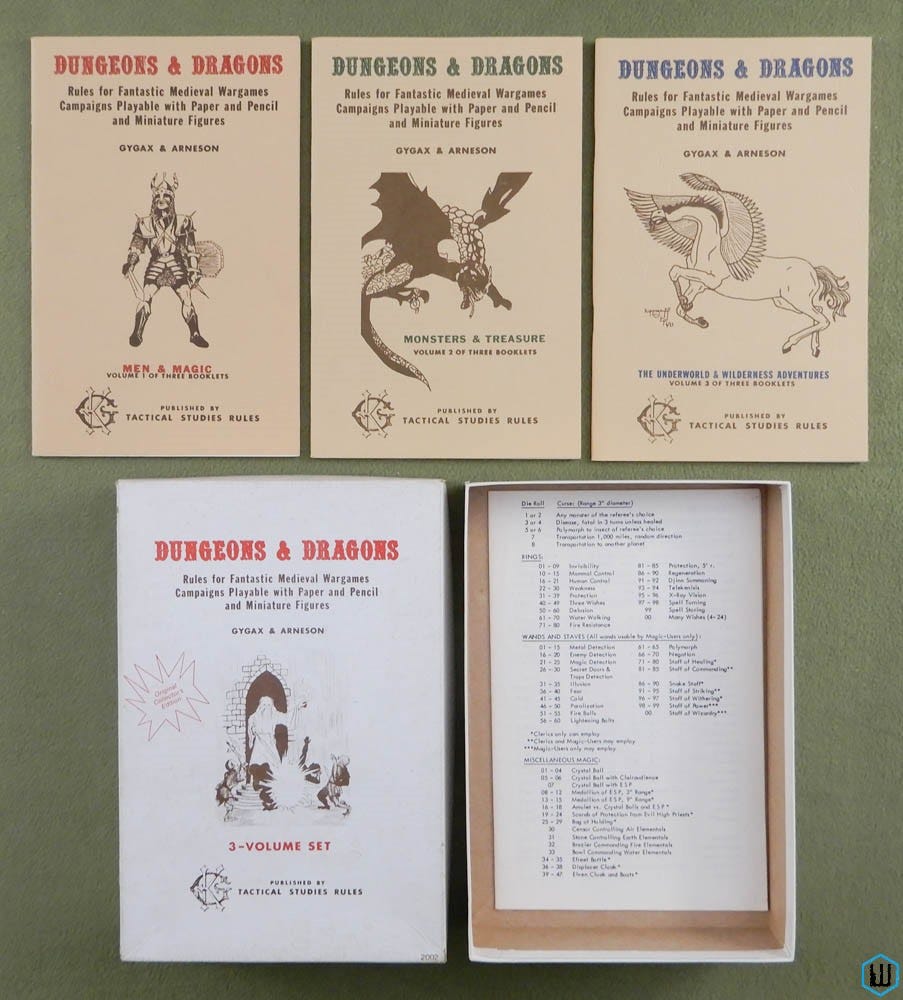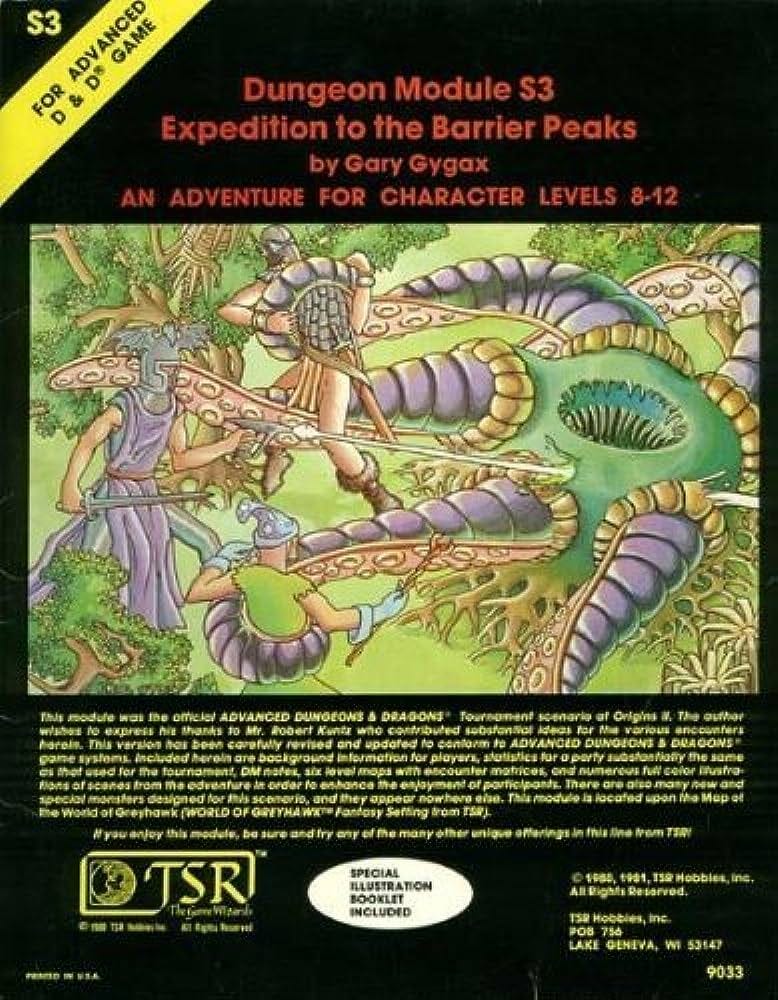 |
I am excited to share the very first episode “Mysteries” of my brand new podcast Into the Megadungeon, where I interview veteran GMs about their amazing megadungeon campaigns, campaigns focused on a single adventuring location with 100’s of rooms spread across many levels. It’s my way of exploring this largely lost play style and contributing to its possible revival. The podcast focuses on the actual experience of GMs at the table. You can expect to hear details about their campaigns, what they learned through play, some tips and techniques, and just maybe a bit of theory—but always grounded in practice.
We start in Episode 01 “Mysteries” with James Maliszewski, author of the blog Grognardia, whom I interview about his Dwimmermount campaign. Among other things, James and I discuss how a GM can make a single dungeon hold the interest and excitement of players. Without further ado, here are links to the podcast!
Episode 01 "Mysteries" on Spotify
Episode 01 "Mysteries" on Apple Podcasts
Episode 01 "Mysteries" on Google
Reader’s Notes to Episode 01
With each episode, I will share “reader’s notes here. If you read these notes before listening to an episode, you’ll have everything you need to know to listen to the episode! For the curious, the links the notes contain can also be used as a springboard to learn more about the history and practice of megadungeon play.
James ran his Dwimmermount campaign as an experiment to learn about the original megadungeon playstyle practiced at the very beginning of the hobby. As part of that experiment he used the very first version of dungeons and dragons (OD&D) that had been designed specifically for this style of play. He mentions in passing several terms and names that refer to these older editions and early game products. (Don’t worry, in later episodes of the podcast I interview GMs who have developed brand new rulesets to run this style of game, as well as some who use fifth edition D&D to play megdungeon campaigns.)
Glossary of Names and Terms
Dave Arneson: One of the two creators of Dungeons & Dragons. Arneson ran the very first games of what would become Dungeons & Dragons, which explored the dungeons beneath Castle Blackmoor. This was both the very first tabletop roleplaying campaign and the very first megadungeon campaign. Castle Blackmoor was never published in its full form.
Gary Gygax: The other creator of Dungeons & Dragons. Gygax ran the second megadungeon campaign exploring the dungeons beneath Castle Greyhawk. Gygax went on to head TSR and authored several early rulebooks of D&D, as well as some classic modules. Castle Greyhawk was also never published in its full form. But Gygax wrote a wonderful little article in 1975 for Europa, a wargaming zine (amateur magazine), telling aspiring GMs what they need to do to set up their very own megadungeon that contains a tantalizing overview of the different levels of Castle Greyhawk. Check it out here.
Original Dungeons & Dragons: Also called “OD&D”, “0E”, or “white box”, this was the original 1974 edition of Dungeons & Dragons that came in a little white box. The box contained the three little brown books titled “Men & Magic”, “Monsters & Treasure”, and “Underworld & Wilderness Adventures”. Curious about the rules? A reader friendly, and cheaper, alternative which I heartily recommend is Fantastic Medieval Campaigns, which accurately presents the original rules in a clean and attractive modern format, available for free here.
Philotomy’s OD&D Musings: A free document by Jason Cone, AKA Philotomy Jurament, published in 2007 introducing contemporary players to playing with the Original Dungeons & Dragons rules. The section on “creating an old school dungeon” is pure gold and should be read by those interested in megadungeon play. It is available for free here
Supplement I Greyhawk: The first supplement for Original Dungeons & Dragons detailing the Greyhawk setting and presenting many optional rules that became staples of later editions of D&D including “variable weapon damage”, the thief (i.e. rogue) class, among others.
Supplement II Blackmoor: The second supplement for Original Dungeons & Dragons detailing the Blackmoor setting, the monk class, and a far out adventure, The Temple of the Frog, that combines pulp sci-fi and fantasy elements.
Supplement III Eldritch Wizardry: The third supplement for Original Dungeons & Dragons, introducing the druid class and psionics, as well as many of the demons and devils such as Orcus that have become staples of the D&D multiverse.
S3: Expedition to the Barrier Peaks: A module written by Gary Gygax, where PCs explore a dungeon inside a crashed spaceship!
Tekumel: The richly imagined campaign world of M.A.R. Barker, based on non-European inspirations including meso-American and Indian sources. TSR published an early version of rules for play in this campaign world, Empire of the Petal Throne.
Clark’s Third Law: Arthur C. Clarke, British science fiction author, enumerated 3 laws over the course of his writings about speculation and future technological change. The 3rd law is, “Any sufficiently advanced technology is indistinguishable from magic.”
#Dungeon23 Challenge: This Sean McCoy’s challenge to create a 365 room megadungeon dungeon in 2023, one room per day. You can read about the original challenge here. I highlighted some of the most dynamic entries I was able to find in the early weeks of the challenge in posts here.
Grognardia: This is James Maliszewski’s prolific blog, dedicated to all things old school gaming. I recommend reading James’ Dwimmermount posts to get a sense of how the campaign developed from modest beginnings to a dynamic campaign exploring the secrets of an entire setting. You can find the blog here, and the Dwimmermount posts are collected here.
As always, if you would prefer to receive these podcast announcements and reader's notes directly to your inbox, then please consider subscribing to my substack, Missives from Beyond the Veil of Sleep, which you can find here.




Great interview (and I've added your blog in my RSS reader)! I ran a B/X megadungeon campaign for over 5 years that was heavily inspired by James' advice in his early Dwimmermount posts.
ReplyDeleteOooh, say more, if you're comfortable. Did you run a published megadungeon, or was it your own dungeon? What was the experience like?
DeleteIt was my own homebrew, although I borrowed quite a few ideas (sometimes with changes, sometimes quite directly) from Dwimmermount and from Michael Curtis' Stonehell. Occasionally we had a few extended excursions outside the dungeon, when I ran adaptations of other modules. Over the years the cast of players changed a bit. We had a couple of players drift away as they got too busy with work, and a few new players come in (friends of an existing player).
DeleteI have over a hundred session reports on my blog (belowtherustylantern.blogspot.com). I'm still chipping away at the backlog; there's about 20 left before the game fizzled out when COVID sent us all home.
Nowadays I play 5e virtually, although I am interested in getting back to in person play with Dungeon Crawl Classics. I'm not sure I've heard of anyone running a megadungeon campaign in DCC, though I don't think there's any reason it couldn't work.
This was wonderful, thank you, really looking forward to the rest of the series. I'm starting a megadungeon now for my family, combining the sample dungeon from Holmes Basic with maps from Dysons Logos. Key advice from this episode: get the players to make a map; let the themes emerge from play. Thank you,again
ReplyDeleteFantastic first episode. I'd love to hear more of your opinions in future episodes. It seems like you were going for mostly an interview, which is great, but I'd love to hear something more conversational sometimes.
ReplyDeleteI'm definitely gonna be following this one.
Thanks, Jon! I agree. I'm new to podcasting, and I'd never spoken to James before, so I was not as conservational as I might be. The second episode is quite conversational, since it's with my own GM Nick Kuntz. Hopefully as my skills develop I can get to a place where it takes a more conversational turn in general.
Delete